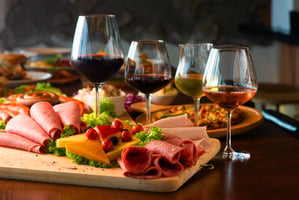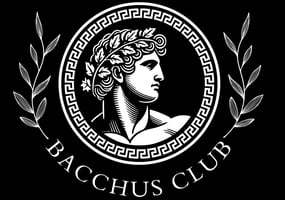In the bustling world of hospitality, restaurant owners and general managers are always on the...
Optimizing ROI: Own Cellar vs Chu's Wine

Learn how to compare the return on investment of maintaining your own premium wine inventory versus using Chu's Wine to power your wine offering. Make informed decisions based on financial modeling and assumptions.
[Spoiler Alert]: the model reveals how restaurant owners can make an extra $50,000 per year while eliminating all the investment and inventory risk with improved cash flow.
Exploring the Financial Model
The financial model takes into account various factors, such as the cost of your inventory, the average price on your wine list, the number of bottles sold per month, and adjustments needed to account for the associated risk and opportunity cost (reinvestment yield), separately for premium ($200+ on your menu) vs other wine selection. These assumptions allow you to estimate the return under different circumstances and make informed decisions.
By understanding the financial model and its components, you can gain valuable insights into the potential ROI of your premium wine offerings.
Assumptions for Your Wine Holding
To utilize the financial model effectively, it is necessary to make assumptions about your wine holding. This includes considering the cost of the inventory, which can be calculated by multiplying the number of labels by the number of bottles per label and the average bottle price.
By inputting these assumptions into the financial model, you can gain a clearer understanding of the financial implications of your wine holding and how it impacts your overall ROI.
Assumptions for Your Sales
Another important aspect to consider when using the financial model is making assumptions about your sales. This includes determining the average price on your wine list and the number of bottles sold per month.
By inputting these assumptions into the financial model, you can assess the potential revenue generated from your wine offerings and how it contributes to your ROI.
Assumptions for Costs
Considering the risks and costs associated with managing your premium wine inventory is crucial. This involves taking into account operational expenses, such as staff salaries, equipment, and storage space.
It's also essential to consider the concept of opportunity cost or reinvestment yield, which highlights the potential earnings that could have been achieved if the investment was directed elsewhere.
Assumptions for Risks
Moreover, a significant risk not yet accounted for in this model, which makes adopting Chu's Wine more appealing, is the hard-to-move items and the liquidation haircut. When calculating the actual value of assets, the resold value should be considered especially after accounting for hard-to-move items.
For instance, for a bottle retails for $100, auctioned for $95, and was purchased for $80 wholesale, after considering a 20% buyer and seller premium at auction, the seller might receive less than $75 or even $60 if the items is hard to move. Additionally, for restaurant operators to acquire truly rare bottles from suppliers, many face the challenge of buying wines they are not confident in selling. If operators are not consistently vigilant, these difficult-to-sell items can gradually degrade the quality of the inventory year over year.
By factoring in these considerations, you can make appropriate adjustments to your returns and gain a more precise understanding of the financial implications of managing your premium wine stock independently versus leveraging Chu's Wine.
Interpret the Financial Model
The model can be found here. In Columns A and B, sensible default parameters have been established.
Regarding wine inventory, the model assumes that the restaurant offers a wine list consisting of 300 premium selections and 200 other selections, with 6 bottles of each premium selections and 12 bottles of each other selections in stock. The cost per bottle is $200 and $20 respectively and directly from direct wholesale and $300 and $30 respectively for on-demand ordering from Chu's Wine.
For sales, the model assumes that the restaurant can sell 15 bottles of premium wines and 60 bottles of other wines per month at an average price of $500.
In terms of associated risks and costs, the model considers operational expenses (such as staff wages, electricity, wine fridge, and storage space) to be $2,000 per month respective for premium and others. It also accounts for the reinvestment yield of 7% (based on the S&P 500 long-term average return to be 7.98%).
With the default parameters in mind, the model reveals while maintaining the inventory by the restaurant might earn 102.5% return for $49,200 an year, adopting Chu's Wine and reinvesting into S&P500 can earn you $100,560 an year while the restaurant does not have to take any risk not tracked in the model such as liquidation haircut, hard-to-move items, and wine being flawed.
Making the Decision


.jpg?height=200&name=image_fx_%20(1).jpg)

